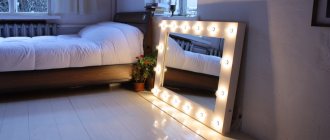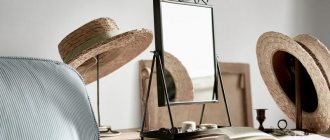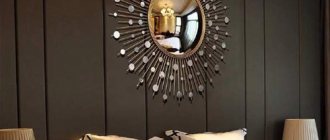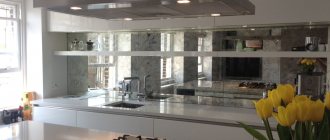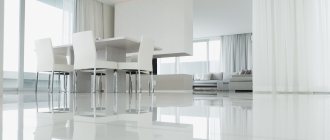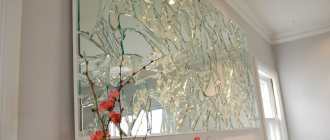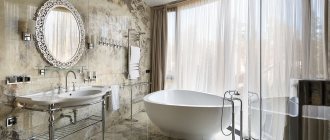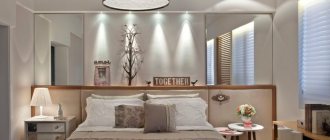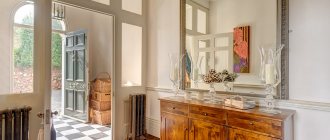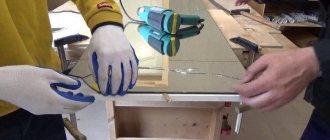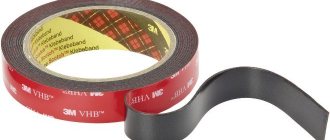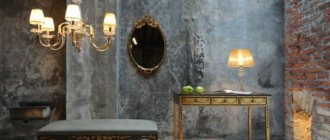Mirrors in the modern world are an integral part of any interior. If in ancient times a mirror had only a functional meaning, today with the help of this item original and extremely effective interiors are created. A beveled mirror will help to completely transform the standard decoration of a room and add some zest. This mirror looks very noble and has an unusual design.
Floor-standing beveled mirror in a classic style
Faceted decorative mirror
What it is?
The name “facet” has French roots and translates as “faceted plane.” Bevel is a method of processing a chamfer (another name for an edge) of mirrors or glass, which allows you to obtain a beveled edge on the front side of interior products. To do this, the edge of the mirror (or glass) is cut at an angle of 45 degrees and the result is an unusual design. In this case, the width of the bevel is most often no more than 6 cm.
Faceted mirror in the living room
Faceted mirror in the kitchen
Bevel cutting gives the mirrors originality and a certain solemnity. Rays of light hitting the mirror surfaces are refracted and spread around the room at different angles, like the sparkle of a diamond.
Insert from a beveled mirror on a wardrobe
Faceted mirror with multiple edges
In addition to their unusual design, mirrors processed in this way look very voluminous and fit well into almost any interior.
The use of this technology helps glassmakers create real masterpieces. The technique has actually been around for a long time. If previously only the skilled hands of craftsmen were used to create such mirrors, today high-tech equipment is used for this. Modern machines allow you to accurately cut an edge from a mirror at the required angle, while simultaneously polishing the cut surface.
Decorative panel made of beveled mirror
Faceted mirror on the ceiling
There are several ways to process mirror panels:
- Straight-line processing - the cut is carried out in a straight line, where the processing width varies from 5 to 50 mm. The minimum size of the product can be from 5x5 cm.
- Curvilinear processing - this method allows the mirror size to range from 11-18 cm, while the parameters of the beveled cut are 5-50 mm.
- Double bevelling - this method allows you to process the mirror on both sides, making the product more elegant, which allows you to give the interior additional sophistication. The refraction of light on a double-sided beveled mirror is more impressive.
- Artistic bevelling is the most sophisticated processing method. The use of multi-colored mirrors in metal frames helps to create unique patterns, as a result of which the interior product resembles a real work of art. For example, with such bevelling you can create bright panels or voluminous stained glass windows. You can use the technology even on a small mirror.
- Facet engraving - technology allows you to turn an ordinary mirror into an expensive decorative element of the interior. In essence, this is an author's painting on a mirror surface.
Faceted mirror in the hallway interior
Faceted mirrors in the hallway
Regardless of the chosen processing method, the bevel of the mirror can be polished to pure transparency or to a matte state.
Rectangular beveled mirror
About technology
Bevelling as a method of processing glass or mirror canvas arose several centuries ago. It involves grinding the edge of the material at a certain angle, resulting in a chamfer. The word “facet” itself is of French origin and means “chamfer, outer edge.”
By the end of the 20th century, high-precision equipment appeared that made it possible to produce bevels automatically. Now the surface is ground down, smoothed and polished according to the specified profile. The resulting edge angle refracts light in a complex way and creates an interesting lighting effect, for which the bevel on the mirror is valued; What’s nice is that the frame is absolutely safe. Because the edge is ground and polished, it is impossible to cut yourself on it.
The angle and size of the bevel are not set arbitrarily; their magnitude depends on the thickness of the mirror. For a canvas with a thickness of 4-20 mm, the width of the bevel (in the case of straight processing) is 4-30 mm. The dimensions are selected carefully, otherwise the mirror is likely to crack or begin to crumble.
Design in a modern style Source design-homes.ru
Faceted mirror in the interior
Mirrors processed with bevel look multifaceted and can turn the interior into luxurious decoration. Such products are very popular among many designers, as well as connoisseurs of original solutions.
Mirror in a beveled glass frame
Wide beveled mirror
A faceted mirror can be combined with almost any interior style. An exception may be, perhaps, interiors in country or Provence style, in which simplicity and practicality are welcomed. But here you can experiment and add a fresh touch. For example, a straight beveled mirror in a bathroom interior will look quite organic. In other cases, beveled mirrors fit perfectly into any interior, be it classic or hi-tech.
Wardrobe with beveled mirror
Aged beveled mirror
Faceted mirrors in a house or apartment can have different designs. The most popular solutions are:
- A solid mirror wall with beveled processing decorates the room and visually increases the volume of space if the interior is decorated in light colors.
- A panel made from beveled components is a non-standard and at the same time original solution.
- Mirror tiles with beveled processing are most often used in bathroom decor.
- Compositions of beveled mirrors in frames look great and practically never go out of fashion.
- Furniture with a beveled mirror – mainly the doors of bedroom or living room furniture.
Faceted mirror in the bedroom interior
Faceted mirror on the wall of the living room
In homes, you can also find other types of faceted mirrors, which not only decorate the interior, but are also a favorite element of household members. For example, these are shaped products that repeat the silhouette of animals or insects. Faceted mirrors with a concave or curved surface can turn a child's room into a corner of laughter.
Wall-mounted bevel mirror
Advantages and disadvantages of facet coating
It may seem that the processing of the edge serves only the decorative function of the bevel on the mirror; but not everyone realizes that this way increases the safety of the product. When bevelling, special grinding machines are used. They process the sharp edge as precisely and carefully as possible, so that after finishing sanding you will not be able to cut yourself on the edge. The procedure does not affect the appearance or characteristics of the canvas in any way.
Bevelling eliminates small irregularities and chips that are somehow present on the workpieces and can cause cracks. Thus, the process increases the strength of the canvas.
The main reason for cutting is to solve decorative problems. A mirror or glass with a beveled coating invariably attracts the eye with the play of light on its edges and turns into a stylish element of the interior. The only disadvantage of such decoration can be considered the need for careful care using special products.
In the kitchen interior Source st.hzcdn.com
See also: Catalog of companies that specialize in the reconstruction and rebuilding of houses
Panel of mirrors
Separately, it is worth highlighting the panel of mirrors, which looks like an artistic composition. To create such a spectacular element, mirror tiles of various sizes are used, with sides beveled at a certain angle. Using tiles, you can simulate any desired configuration and thereby give the interior the necessary atmosphere.
Coffee table made of beveled mirror
Faceted mirror in the bathroom
The faceted mirror panel is particularly beautiful and elegant. This element enhances the decoration of the room and can serve as a stylish highlight of the interior. The decorative product has a number of advantages:
- Originality - an interior element helps to visually expand the space and increase the illumination of the room. At the same time, the bevel emphasizes the edges between the tiles, thereby embodying the effect of a crystal wall.
- Variety - mirror tiles can have different sizes, shapes (square, triangle or hexagon) and color, where products in gray or silver shades look very sophisticated. A panel made of bright multi-colored mirrors looks especially chic.
- Versatility - a decorative item looks good in any size. Using the product you can decorate walls, niches, bedside areas, window slopes, columns and other areas of the room. Particularly daring individuals can even use the product to decorate the ceiling.
- Practicality - faceted panels have an advantage over a solid mirror sheet: if a separate part of the product is damaged, only one element will need to be replaced.
Ceramic tiles can also be used in combination with mirror components. This combination allows you to realize incredible compositions that are not repeated anywhere else.
Wall of beveled mirror in bathroom decor
Venetian beveled mirror
Types of facet
The end of the mirror surface is cut in two ways:
- One-sided (simple) bevel. The face is obtained after performing a single cut; Such mirrors are widespread due to their low cost.
- Bilateral. The chamfer is removed from the front and back parts of the product, increasing the shine of the edges.
The following options are distinguished by form:
- Double, triple bevel. The chamfer is removed several times, with each subsequent bevel narrower than the previous one. Due to this complication, light hitting the surface is refracted more times. Refracted rays increase the shine of the facets to a “diamond”, enhancing the beauty of the play of light and color.
- Straightforward. It is made on canvas in the shape of a square, rectangle or any other shape that does not have smooth lines.
- Curvilinear. Beveled edges turn out to be curved if a round or oval product is processed, as well as a product with a decorative shape (for example, in the shape of a flower).
Decor around the headboard Source ksvmebel.ru
See also: Catalog of projects of two-story houses made of vulture panels
How to use it correctly?
It is very important to place a beveled mirror in the room correctly, otherwise, instead of an elegant design, you can get the opposite effect. To do this, you should follow the designers' recommendations:
- To fill a dark room with additional light, a decorative element must be placed opposite the window.
- You should not place the mirror in front of dark things. When reflected, they will make the room even darker.
- It is not recommended to use a reflective wall opposite the bed. According to psychology, such an arrangement can disrupt restful sleep.
- It is worth taking care of safety and not placing a beveled mirror in an inappropriate place. For example, such a mirror should not be placed in a child’s room if the child is still of an unconscious age.
Vintage beveled mirror
By correctly placing beveled mirror products, you can undoubtedly create a luxurious interior with a pleasant atmosphere. This solution will help to realize unusual design ideas and embody illusions in the interior.
Faceted mirror panel
Stages of manufacturing beveled stained glass
The "Dalle de verre" technique is a widely used, often abstract form of stained glass. The glass is cut, broken or crushed into pieces that will make up the design. The edges are cut at an angle to create a bright reflective edge.
The elements are connected and installed like ordinary stained glass. Classic fabrication requires more space in the frames due to the thickness of the finished stained glass. It can be installed with or without outer covers. Art panels block transmitted light more than traditional stained glass, making the windows appear to sparkle like jewels.
Rice. 3. Artistic stained glass
Stained glass, as an art and craft, requires artistic skill to conceive the design, develop engineering drawings for each project, and:
- necessary parts for assembling the decorative part;
- taking into account the design of a traditional window, it is necessary to ensure a tight fit to the frame;
- features large windows to maintain the ability to support its own weight and artistic elements.
What are the stages of manufacturing elegant, fantastically beautiful stained glass windows for home and office design?
Making a sketch of a beveled stained glass window
Although some of the tools for making stained glass have improved, windows are still made by hand just as they were centuries ago. A design is selected for the space allocated for stained glass. The artist creates a sketch of the future stained glass window. After the decor is approved, technical parameters are required:
- The first step in creating a window is to study the installation location, the exact window opening pattern, its parameters, and the reliability of the frame.
- The sketch is usually made on paper or cardboard, taking into account the actual dimensions of the space that should be filled with glass.
- Multicolor drawing is prepared in black and white mode.
- Then a full-size drawing of the future product for installation is created.
- Glass cutting drawings for templates are prepared separately.
A modern template for cutting glass is a careful and precise tracing of the drawing lines on heavy paper. Lead lines are the outlines of the shapes for the patterns along which the glass needs to be cut. This drawing serves as instructions for the subsequent placement and binding of individual pieces of glass with a metal profile into a single artistic canvas.
Rice. 4. Sketch of beveled stained glass
To prepare working templates for cutting glass, use a copy of the drawing with the output lines - it is cut along the lines using two-bladed scissors or a knife. When a special tool passes through the middle of the black lines, at the same time, sufficient space is taken into account between the glass segment and the metal profile - the core for connecting the elements. The core is the supporting wall between the upper and lower flange of the fasteners.
Rice. 5. Stained glass sketch
Choosing the connection of bevelled stained glass elements
Classic stained glass was connected with lead strips that follow the contours of individual parts. A bevel is removed on the edges of all or several elements. In cross section, the profile has an “H” shape, which allows glass to be inserted on both sides. The designer must consider:
- window design and structure,
- the nature and size of the glass available,
- stained glass manufacturing techniques.
Rice. 6. Classic stained glass
To properly prepare the templates for the glass elements, the exact position of the profile to hold the glass is carefully designed.
Modern production uses lightweight materials for assembly - copper, brass, aluminum profiles. The cut metal strips are usually shaped like a "U" or "H" to hold the glass pieces together to form a stained glass window:
- Material up to 1 ml thick can be held together with glue, so foil is used to connect individual pieces of glass. For large products, a profile is used.
- The method of joining the glass pieces is simple - the foil is centered on the edge of each glass piece, curved over the edge to cover a very small portion of the back and front surfaces of the glass.
- The pieces snap together and the solder melts over the foil surfaces, causing the foil-covered edges of the glass to fuse together.
Each piece of glass is selected in the desired color and cut according to a template. Modern beveled stained glass is assembled on a brass or copper profile. Precise fit is achieved by soldering the edges and using a tool that can bite off excess pieces of metal. This stained glass window can easily withstand loads when closing and opening.
Illumination of bevelled stained glass
Wright's stained glass compositions consist of interweavings of brass, copper, and lead, which become individual decorative details. The amazing play of light delights with extraordinary colors. Tiffany lamps are loved precisely for their extraordinary range of colors, but stained glass windows and panels can be supplemented with LED lighting to get an original source of light in the evening.
Rice. 24. Illuminated stained glass windows
Types of connection of bevelled stained glass elements
Stained glass has the unique ability to change the visual environment, add color and shape to a space, and practically change the nature of illumination. That is why our stained glass windows are individual projects created for each home separately. Stacked stained glass windows are assembled in various ways - all options have been tested over centuries of use in churches and cathedrals:
- filled with adhesive composition,
- connected step by step by soldering,
- assembled into a frame using a profile and soldering, secured with resins or cement.
The type of connection of elements determines how the window design will work in the overall interior environment, taking into account the needs of the client, the quality of light and the unchanged functionality of the windows.
Rice. 15. Elements of beveled stained glass
Metal profile frame
Since glass is crushed into pieces of different sizes for production, it is necessary to assemble them into a single panel after processing. The combination of glass elements of different sizes and colors forms a given design by placing them in a stencil.
To keep them in the same plane, metal profile strips are used with side grooves to receive the edges of the glass. The metal parts are shaped into glass, which is inserted into the grooves and the edges of the profile are rolled. The metal is connected at the intersections and secured to a metal frame.
Rice. 16. Frame for stained glass
Tiffany method
Tiffany is a technology for creating stained glass, which involves fastening individual parts of glass using a thin metal strip and soldering. Traditionally, copper foil is used, but in artistic works it is possible to use gold foil and expensive soft alloys. Thanks to this, the main components of Tiffany's stained glass technique are bright colors, fancy shapes and intricate plots.
Rice. 17. Tiffany Method
Pasting on glass
The application involves gluing individual elements directly onto glass using transparent resins. Artistic stained glass as a result of this technique can be made in a short time. Real glass bevels, acrylic glass, film materials, acrylic and silicate paints, and polymers are used for creation.
The application method reduces the complexity of stained glass manufacturing technology, improves their mechanical strength, and simplifies the cleaning of architectural elements. Installation of such panels is possible even on light plastic frames. It is recommended to use the gluing technique in places where mechanical stress is always possible, in families with small children.
Rice. 18. Stained glass stickers
Manufacturing of elements for bevelled stained glass
Modern stained glass often uses different types of glass depending on the technique and installation location. The main material for obtaining stained glass elements is glass, which in ancient works was colored by adding metal oxides. Copper oxides were added to produce green glass, cobalt oxides to produce blue glass, and gold oxides to produce red glass. Today, modern ingredients are used to produce a wider range than in the past.
Rice. 7. Stained glass element
The basic element of beveled stained glass is faceted glass pieces. The elements, which are called bevels (bevels or bevels), are made from flat glass with a thickness of 5 mm according to a template. To obtain a bevel on a cut and polished edge, remove up to 1.5 mm of edge at an angle other than 90°. Roughing, smoothing, and polishing are carried out in stages. This edge reliably connects the individual bevels with a metal stained glass strip.
Real bevels are used in a wide range of different sizes and shapes. The broken edges cause light to bend and refract into a rainbow of colors. But innovative technologies have changed and simplified the technique of creating stained glass.
Rice. 8. Bevels
The glass is cut using a laser under computer control; synthetic and polymer compounds are used for framing, which completely imitate a metal profile - this reduces the weight of the stained glass window.
Methods for manufacturing glass and its polymer substitutes make it possible to create stained glass windows using color and texture, with partial coloring or giving the required shade to finished parts. In production, glass is decorated with bubbles, strands, fibers, and sparks from aventurine additives. For facets, an alloy of colored and colorless glass is used.
The most popular color is always ruby and all shades of red - the most expensive glass is obtained by adding gold, and therefore has a high cost. On large fragments it can be replaced with glass paint. Modern innovations have found a worthy replacement for complex engraving - filigree mosaic glass is transparent, but includes microthreads that form a pattern.
For fastening, round support rods are installed on the stained glass. They are attached to the stained glass panel with copper wire and soldered to metallized bevel profiles. The flat support rods are called ribs - they are soldered directly to the stained glass panel. Insulation of the structural base today is carried out with strong, durable epoxy cement.
Connection of bevelled stained glass elements
Soldering assembly of the window takes place on a flat surface. Strips of metal are selected for glass by cutting and bending around individual elements. Thus, the window is filled from one edge to the end. The craftsman moves the pieces around until the window is completely assembled on the table and each glass piece is encapsulated in a metal frame.
- The bevels are held together by a metal profile. Metals are used because of the flexibility and adaptability required for edging various shapes of glass parts. Once assembled, each lead or copper connection is hand soldered on both sides of the panel.
- The stained glass is then insulated and made waterproof. To do this, a special connection is made between each part of the glass and the fastening - this is a labor-intensive process. The medieval recipe for this cement is unknown, although the main ingredients were ground chalk and linseed oil - the semi-liquid cement is applied with a brush and then covered with a layer of chalk or sawdust to absorb excess liquid. The panel is then cleaned with a dry brush until no cement remains under the lead. Nowadays rubber glue, ready-made cement mixtures, and resins are used.
- Once completed, excess waterproofing compound is removed and the surface is cleaned. Everything is repeated on the other side. Curly steel braces are then added to further strengthen the stained glass. These details are important to the long-term structural stability of the window. They help support the weight of the window and ensure a flat panel structure over many years of service.
Rice. 9. Stained glass for a classic interior
Instead of glazing with a metal profile, another pouring technology is used - the matrix is filled with a mixture of concrete or epoxy resin. Everything is encased in a wooden mold that represents the exact size and shape of the site. The glass pieces are first glued to the stained glass drawing, which is coated with clear grease, so that the paper can be removed when finished. The technology is used in film and polymer stained glass.
Rice. 10. Stained glass in the interior
Installation of beveled stained glass
Adding reinforcing bars to modern stained glass windows simplifies installation and reduces work time. Stained glass panels can be very heavy, so they are installed in wooden and metal window frames. The preferred method is to solder a flat rod perpendicular to the window. The ends of this strip or rod are inserted into the frame to prevent deflection - this allows the choice of the most attractive way to display the extraordinary beauty of the colored glass art piece. Stained glass windows can be placed inside or outside the glazing, or glued directly to the glass.
Rice. 21. Faceted stained glass in the interior
Installation inside a stained glass frame
Insulated or double glazing consists of two or more layers of glass separated by insulation along the edge and sealed to create an air space between the layers. This type of glazing has thermal insulation and noise reduction functions.
The finished stained glass window is mounted inside the frame on special rods. For them, small holes are made in the frame with seals. When the stained glass is fixed, the window is assembled to its original form.
This installation method is reminiscent of blinds. A positive aspect of installation is the protection of the artistic product and the absence of the need for cleaning.
Rice. 22. Installation inside a stained glass frame
Mounting on top of glass
Rice. 23. Mounting on top of glass
It is fashionable to mount the finished stained glass window, like blinds, directly on the frame or place an order for fastening directly to the glass. This installation reflects the energy of radiant infrared radiation, thereby retaining radiant heat, visibly strengthens glazing, prevents fading of home decor and adds a decorative accent to the interior.
Materials for making beveled stained glass
It is very important that the production process does not take much time, is safe and does not require expensive equipment. Stained glass windows must be resistant to corrosive environments and simplified to facilitate the maintenance process.
The most important thing is high artistic, decorative and optical characteristics, the absence of defects in glass elements. The preparation of stained glass with improved mechanical properties and the desire to ensure that the products are not cumbersome to operate and are interchangeable, leads to the use of the best materials:
- Floating glass is produced by melting raw materials consisting of sand, limestone, soda ash, dolomite, iron oxide and a salt mixture. The glass is leveled to form a completely smooth, glossy surface on both sides with a uniform thickness of approximately 6 mm. Modern stained glass painting is carried out over the entire thickness of the glass. The finished rolled material is practically not distorted and contains no defects - this is an ideal option for glazing and the production of high-quality stained glass windows.
- Cathedral glass is a monochromatic sheet glass that may have a texture on one side. Traditional stained glass material is created using natural dyes, minerals, and lime baked onto the inside of the glass as a glaze to provide color. Polycarbonate is used for protective coating - it is a reliable material for large stained glass windows in public buildings.
Rice. 19. Cathedral Glass
- Acrylic is a strong plastic, but it is not as strong as polycarbonate. However, it will not fade - it is a reliable and durable stained glass material that helps block UV rays.
- Triplex is laminated glass consisting of two or more layers connected to each other using a special laminating film or liquid. Triplex is used for safe glazing of facades, entrances and stained glass structures.
- Facet elements are manufactured individually for a project or used as ready-made elements for all stacked glass structures.
- Connecting elements are metal profiles that connect elements.
- Paints - acrylic for cold coloring of facets and silicate mixtures - for hot tinting.
- Insulating mixtures are cement and epoxy resin, special mastics that strengthen the structure and provide moisture resistance.
Standard sizes, weight and strength of beveled stained glass
Stacked stained glass windows from beveled elements with faceted edges Dalle de Verre are made from glass 5-6 mm thick and assembled in an epoxy matrix. Pieces of colored glass are framed in metal and soldered together to form the window design. The glass acquires a sparkling effect, but perfectly limits the excessive flow of light. This is a reliable and heavy structure - its average weight is approximately 65 kg per square meter. meter.
Rice. 20. Windows with beveled stained glass
The studio produces colored beveled panels for various window models. But for plastic frames, it is recommended to order lightweight structures made of acrylic glass or one-sided stained glass windows - they are lighter and will not affect the operation of inexpensive windows.
